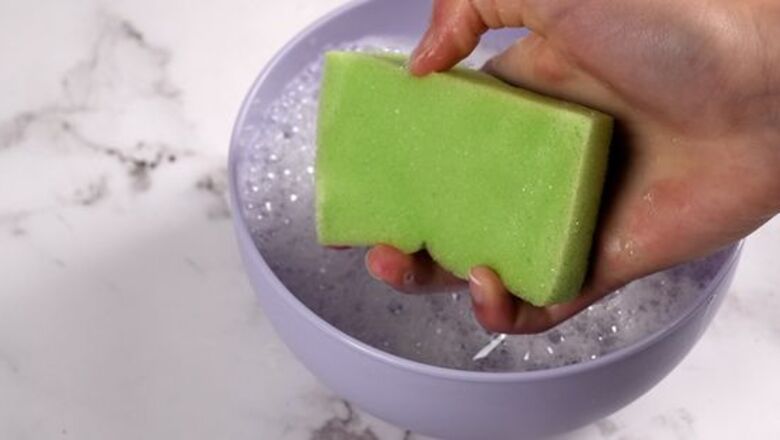
views
Cleaning Before Grease Settles
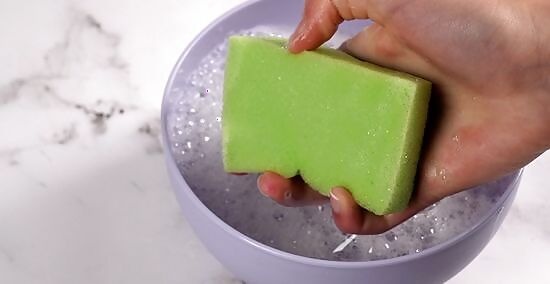
Dip a washcloth or soft sponge into soapy water. Mix a squirt of liquid dish detergent into warm water to create a bubbly cleaner, and pick up the soapy water using the cloth. A sponge can be used instead as long as it isn't an abrasive scrubber. Any abrasive scrubber can end up scratching the steel. The mixture can be made in the sink while you're washing dishes. Soapy water won't harm stainless steel surfaces or appliances. Commercial products such as Barkeeper's Friend, Cerama Bryte, Sprayaway, and Weiman are also non-abrasive cleaners that work well on stainless steel.
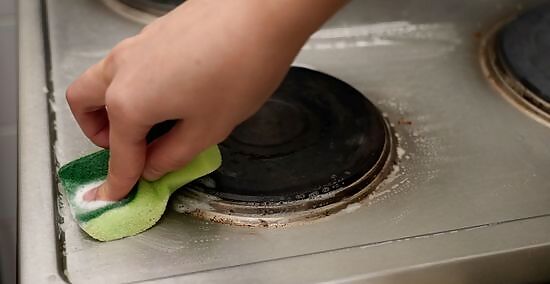
Wipe the steel surface in the direction of the grain. Look closely at the stainless steel. You'll notice that its particles form lines going in a certain direction. For example, your steel object will have lines going up and down or left and right. Move the cloth along those lines. When using soft cloths and soapy water, you aren't likely to scratch the surface if you make a mistake, but it's a good idea to always try to clean stainless steel along the grain.
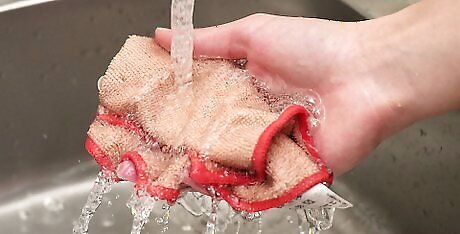
Rinse the same cloth with water. After soaping up the stainless steel, place the same cloth you used under the faucet. Run warm water over it to clear off the soap.
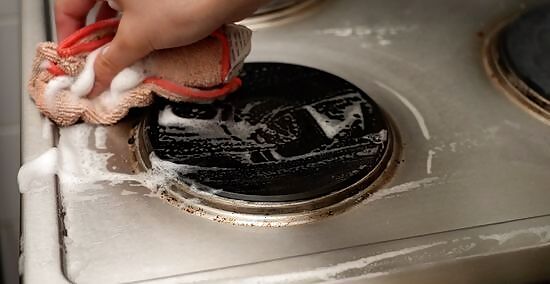
Wash the soap off the steel. Take the rinsed cloth and wipe it over the surface of the stainless steel to remove the soap. Remember to wipe along the grain.
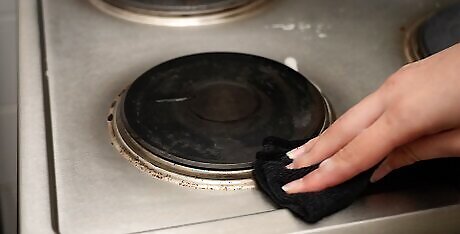
Dry the surface with a fresh cloth. A clean, soft cloth such as a terrycloth towel will do. Wipe it along the grain to remove the moisture and prevent water stains.
Tackling Heavier Grease
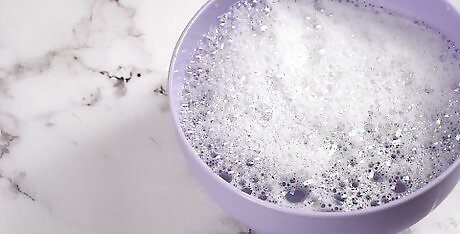
Mix a mild detergent in hot water. Empty the sink or get a clean bowl. Fill it with hot water, then add a squirt of a liquid detergent. Mix in the detergent to create soapy water. Mild detergents are those such as Palmolive and Dawn that don't have abrasive qualities.
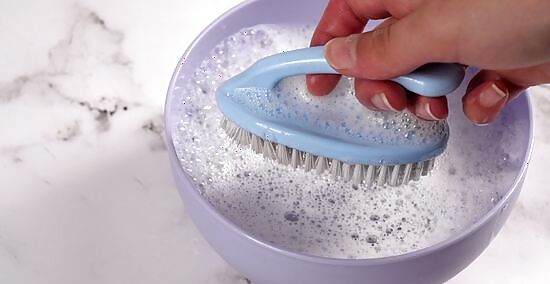
Dip a nylon scrub brush into the mixture. A nylon brush for dish cleaning is soft enough to avoid scratching the steel. Dip it into the soapy water. If you are worried about the brush scratching the steel, you can try to apply the cleaner using a soft cloth, sponge, or non-scratch scouring pad such as a Scotch-Brite.
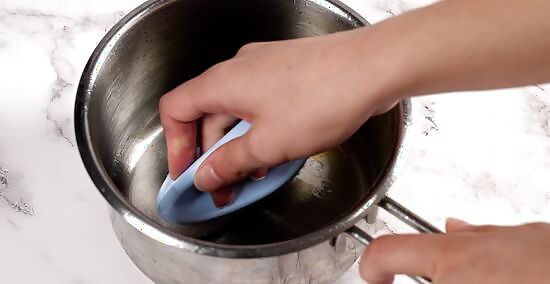
Scrub the greasy surface. Again, remember to take a close look at the surface of your stainless steel. If you can see the grain forming lines, scrub along those lines. This keeps the brush from scratching the steel.
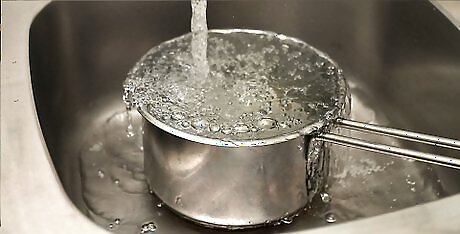
Rinse the scrubbed surface. Place the appliance under warm running water if possible or use a soft cloth. The scrub brush will dislodge the grease, and the water will rinse away the grease and soap. Use the cloth to wipe along the grain and remove the soap.
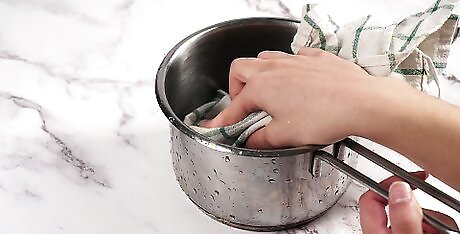
Dry the surface with a towel. Use a clean, soft cloth and move it along the grain. Make sure you remove all the moisture so that the stainless steel doesn't get a water stain.
Removing Stubborn and Burnt Grease Stains
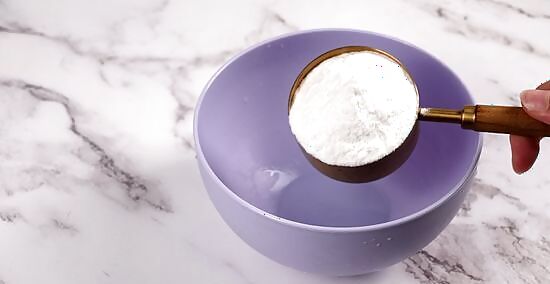
Mix baking soda and water. In a bowl, combine equal parts baking soda and water. Mix the two together until they form a paste.
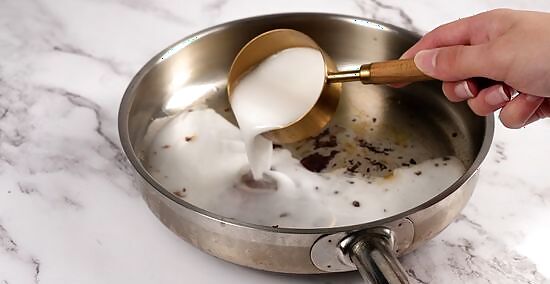
Rest the mixture on the stained area for 15 minutes. Apply the baking soda mixture by spreading it with a spoon or soft cloth without scrubbing it into the steel. Come back after 15 minutes.
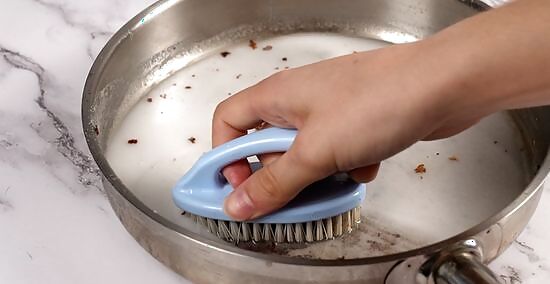
Scrub the stain using a nylon brush. An old toothbrush will suffice if you don't have a nylon brush. Remember the orientation of the steel's grain and scrub back and forth along it.
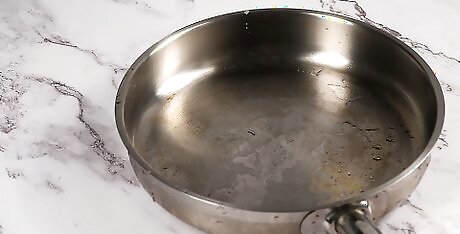
Rinse off the surface. Place the stainless steel under warm, running water if possible or use a damp cloth to remove the baking soda cleaner. Check to see if the stain has gone away.
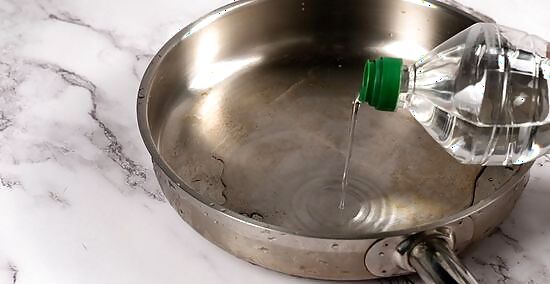
Pour vinegar over the stain. If the stain persists, pour vinegar straight from the bottle. Vinegar is acidic and can help remove the stain, so use the undiluted variety for the best results. When working with pots and pans, you can also try adding a half a cup of water and a sprinkle of baking soda to the vinegar before heating the mixture to a simmer on the stove for 20 minutes.
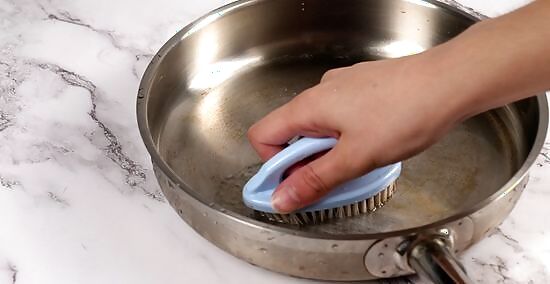
Scrub the stain again. Use your nylon brush or old toothbrush to move along the grain. Be gentle to avoid causing scratches.
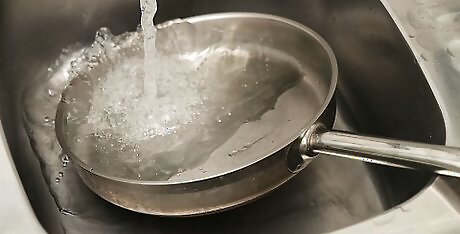
Rinse off the vinegar. Again, place the stainless steel under warm, running water or use a damp cloth to remove all of the vinegar once you are done scrubbing. The stain should be minimized or removed.
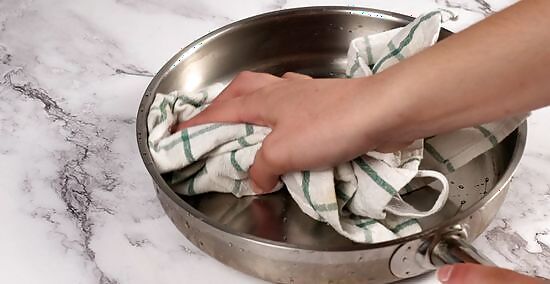
Dry the steel with a soft towel. Wipe away all the moisture using a terrycloth or microfiber towel. Make sure all the moisture is gone so it doesn't leave water stains.




















Comments
0 comment